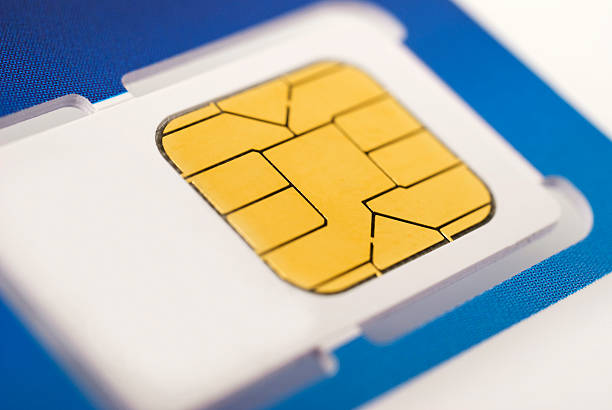In the ever-evolving world of technology, the eSIM card, or embedded SIM, is emerging as a game-changer in the way we connect our devices to cellular networks. Unlike traditional physical SIM cards, an eSIM is a digital SIM that is embedded directly into a device, eliminating the need for a physical card swap. This article delves into the intricacies of eSIM technology, exploring its benefits, drawbacks, compatibility, activation process, and its potential to reshape the future of connectivity.

Understanding the eSIM Card
An eSIM card is essentially a small chip embedded within a device, capable of storing multiple carrier profiles. It functions similarly to a traditional SIM card, enabling devices to connect to cellular networks for voice calls, text messages, and data services. However, the key distinction lies in its digital nature, allowing for remote provisioning and management of carrier profiles without the need for a physical card swap.
Benefits of eSIM Technology
The adoption of eSIM technology brings forth a plethora of advantages for both consumers and device manufacturers:
- Convenience and Flexibility: eSIMs eliminate the hassle of physically swapping SIM cards when switching carriers or traveling abroad. Users can easily activate or switch between carrier profiles remotely, providing unparalleled convenience and flexibility.
- Space Efficiency: By eliminating the need for a physical SIM card slot, eSIMs free up valuable space within devices, allowing for sleeker designs and potentially larger batteries.
- Enhanced Security: eSIMs are inherently more secure than physical SIM cards as they cannot be easily removed or tampered with.
- Simplified Logistics: For device manufacturers, eSIMs streamline the manufacturing and distribution process by eliminating the need to handle and ship physical SIM cards.
- Multi-Carrier Support: eSIMs can store multiple carrier profiles, allowing users to seamlessly switch between carriers or maintain multiple active connections simultaneously.
- IoT Enablement: eSIMs are particularly well-suited for the Internet of Things (IoT) ecosystem, enabling seamless connectivity for a wide range of devices without the need for physical SIM card slots.
Drawbacks and Challenges
While eSIM technology offers numerous benefits, it also presents certain challenges:
- Limited Availability: eSIM support is still not universally available, with only a select number of carriers and devices currently offering compatibility.
- Carrier Lock-in: In some cases, eSIMs might be locked to a specific carrier, limiting users’ ability to freely switch between providers.
- Activation and Management: The process of activating and managing eSIM profiles can vary depending on the carrier and device, potentially leading to confusion for some users.
- Dependence on Device Manufacturers: The implementation of eSIM technology relies heavily on device manufacturers, potentially limiting its widespread adoption in older devices.
eSIM Compatibility
As of today, eSIM technology is supported by a growing number of devices and carriers. Some of the popular devices that offer eSIM compatibility include:
- Smartphones: iPhone XS and newer models, Google Pixel 3 and newer models, Samsung Galaxy S20 and newer models, and various other flagship smartphones.
- Tablets: iPad Pro (3rd generation and newer), iPad Air (3rd generation and newer), Samsung Galaxy Tab S6 and newer models.
- Smartwatches: Apple Watch Series 3 and newer, Samsung Galaxy Watch, and other cellular-enabled smartwatches.
It’s important to note that eSIM compatibility can vary depending on the specific model and region. It’s advisable to check with your carrier and device manufacturer for the latest information on eSIM support.
Activating an eSIM
The process of activating an eSIM typically involves the following steps:
- Check Compatibility: Ensure that your device and carrier support eSIM technology.
- Obtain an eSIM Profile: Contact your carrier to obtain an eSIM profile, which contains the necessary information to activate your cellular service.
- Scan QR Code or Enter Activation Code: Depending on your carrier and device, you might need to scan a QR code or enter an activation code to install the eSIM profile.
- Follow On-Screen Instructions: Follow the on-screen prompts to complete the activation process.
The Future of eSIM
eSIM technology has the potential to revolutionize the way we connect our devices, offering unparalleled convenience, flexibility, and security. As more carriers and device manufacturers embrace eSIMs, we can expect to see a wider range of compatible devices and services in the near future.
The rise of eSIMs could also lead to increased competition among carriers, as users gain the ability to seamlessly switch between providers without the need for physical SIM cards. Additionally, eSIMs are poised to play a crucial role in the growth of the IoT ecosystem, enabling seamless connectivity for a vast array of devices.
Conclusion
The eSIM card represents a significant step forward in the evolution of connectivity, offering a host of benefits over traditional physical SIM cards. While the technology is still in its early stages of adoption, its potential to reshape the way we connect our devices is undeniable. As eSIM support continues to expand, we can anticipate a future where physical SIM cards become obsolete, replaced by the seamless convenience and flexibility of embedded SIM technology.
لا تعليق